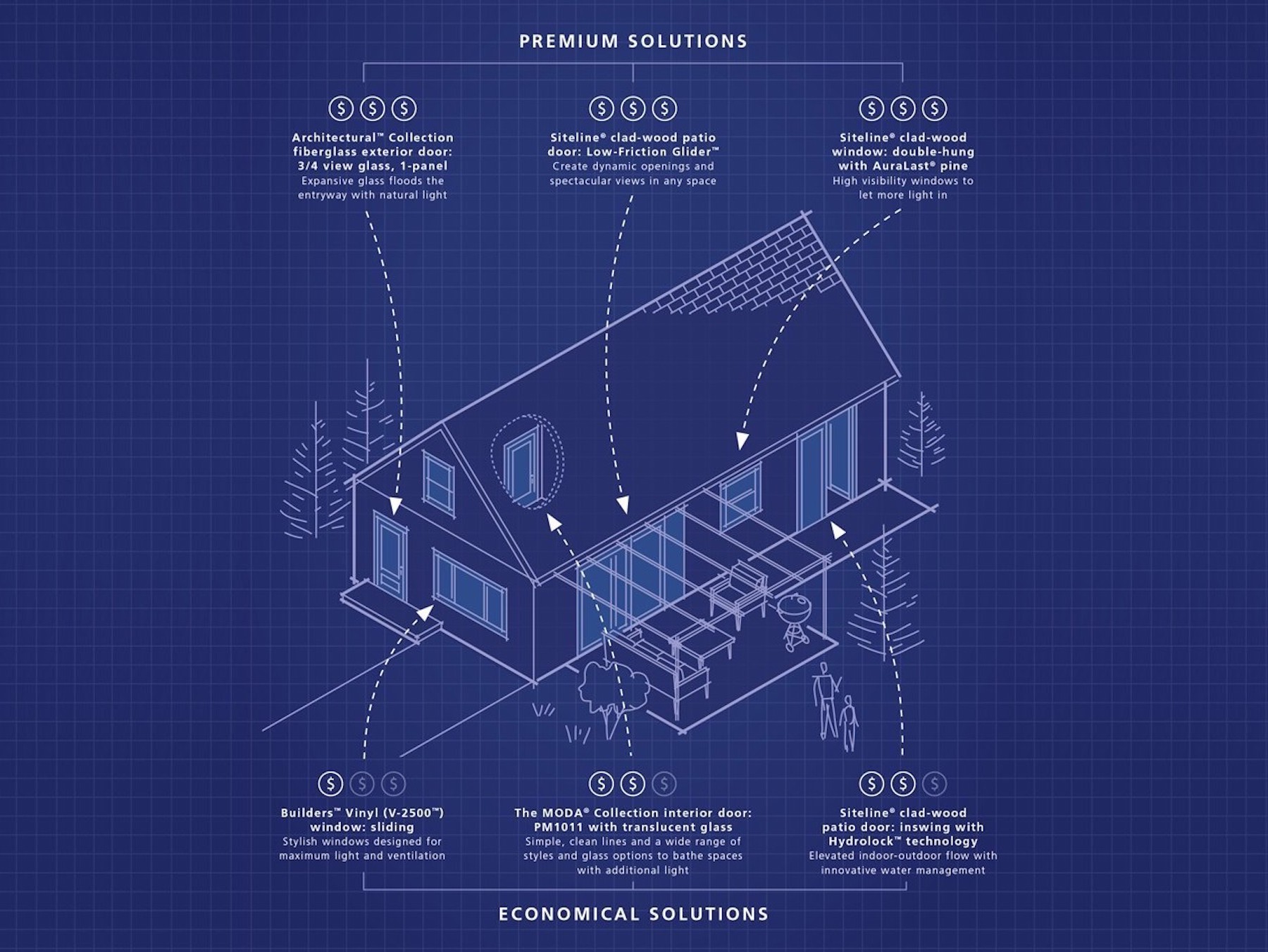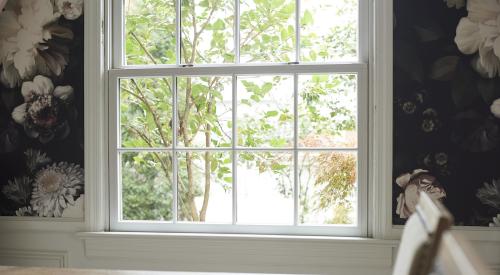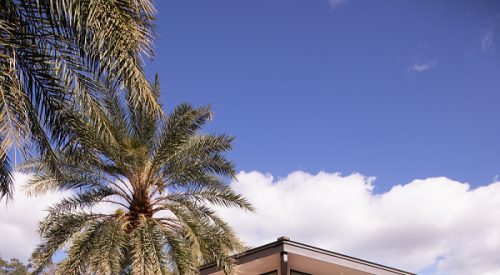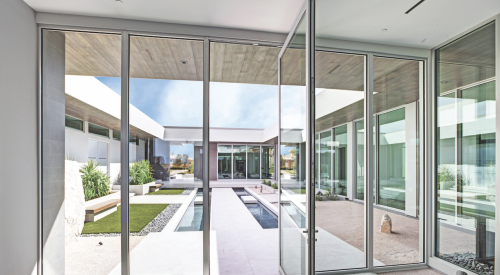The windows and doors that best meet homeowners’ needs aren’t always the most costly ones. On the other hand, the windows and doors that deliver the most value aren’t always the least expensive options.
Homeowners are more likely to get the look and lifestyle they want not at either end of the pricing spectrum. Instead, the most effective value engineering involves carefully combining both premium and economical windows and doors, all in one home.
Mixing products thoughtfully will allow homeowners to achieve three popular lifestyle goals.
Outside in: Connecting the interior and exterior
Over the pandemic, we all saw firsthand the importance of spending time outdoors—and of bringing the outside in as much as possible. Now, with that heightened awareness and understanding, homeowners want more fresh air and natural light. They crave spaces that seamlessly connect the exterior with the interior.
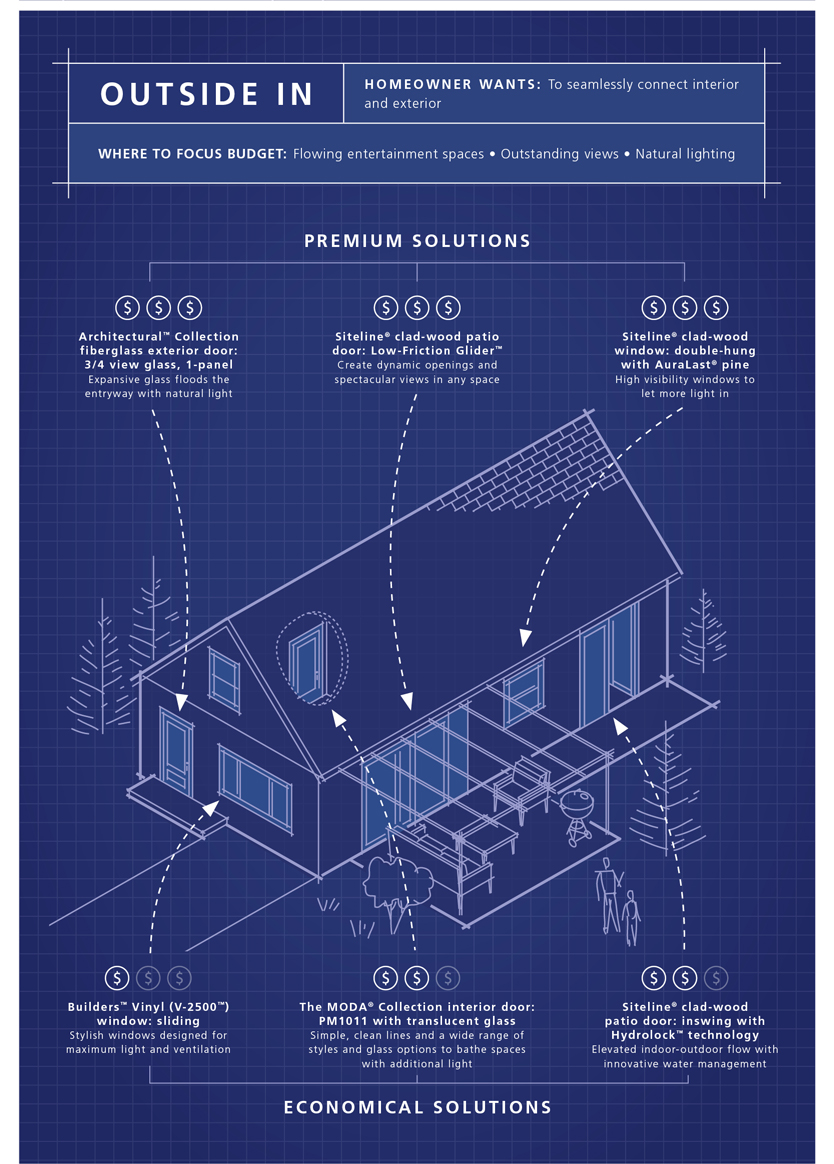
Sunrooms surrounded by windows, for instance, “blur the outside and inside,” says Todd Hallett, president and cofounder of TK Design & Associates, a residential home design firm based in the Detroit suburb of South Lyon, Mich.
“It doesn’t always mean opening spaces physically but connecting spaces visually,” says Larry Garnett, a residential designer and owner of Larry W. Garnett Design & Planning, located in Granbury, Texas, outside the Dallas/Fort Worth area.
Those physical and visual connections can be made with JELD-WEN’s Siteline® clad-wood windows or by adding exterior fiberglass doors with large glass panels, such as those found in the Architectural™ Collection. But products like the V-2500, Builders™ Vinyl window, also fill homes with both light and air, and have a smaller price tag.
So how do you decide where to place which products—and how exactly to mix higher-cost and lower-cost windows and doors?
To make that determination, Garnett recommends placing the more premium products where they will be seen and used the most. “If homeowners like the look of wood or clad-wood windows, then place those in the areas where they will get the most visual enjoyment out of them,” says Garnett.
Such areas might be the back patio, living room, kitchen, or primary bedroom. Go with higher-end windows and doors on walls that face the street or back yard—“where it will make the most difference visually both to the street and to the interior,” says Garnett.
For these spaces, the JELD-WEN Architectural™ Fiberglass doors, with their expansive glass, or Siteline® clad-wood patio doors or windows could be ideal options.
And then in the rooms that don’t get used as much, or the rooms that face neighboring properties, use more economical products, such as V-2500, Builders™ Vinyl windows or the Smooth-Pro™ exterior fiberglass door collection.
Green living: Living responsibly and comfortably
More than ever, homeowners care about air. They’re concerned about the quality of the indoor air they breathe. At the same time, they want to minimize their homes’ carbon footprint.
In short, homeowners want to live both comfortably and responsibly.
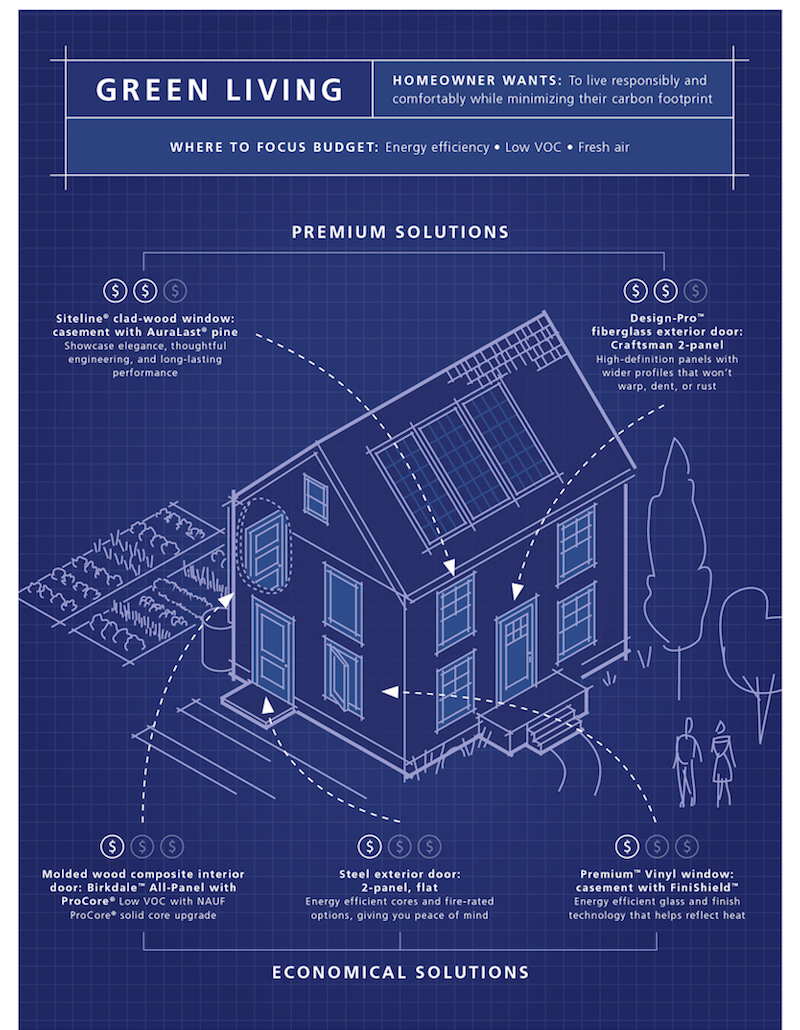
Operable windows can help them do that—allowing for plenty of cross-ventilation and reducing the reliance on energy-consuming cooling systems.
“We’re building houses so tight now with insulation, which is a good thing, but we still need fresh air and proper ventilation, and a big part of that is windows that operate easily,” Garnett says.
Homeowners can choose to add patio doors to increase ventilation and access to the outdoors or update their windows to include triple pane glass for maximum energy efficiency year round. And they can also go more economical by switching to casement windows for optimal ventilation when the windows are open—or by choosing JELD-WEN’s Premium™ Vinyl windows with FiniShield, an exterior finish technology that helps reflect heat. As Garnett notes, “Windows have gotten very sophisticated energy-wise.”
To decide where to place the premium versus economical products, Garnett recommends considering the parts of the house that will get the biggest bang from each investment. If one side of the house gets more sunlight, for instance, that could be the area where the homeowner invests in more of the highly efficient windows, as well as premium fiberglass doors that won’t warp, dent, or rust.
Install operable windows wherever they’re needed, such as the main living and sleeping areas. But use less expensive fixed windows where they’re not, like the basement. “In rooms where you don’t have guests, you don’t necessarily need the high-impact windows,” says Hallett.
Style above all: Achieving the wow factor
Today’s homeowners want a more modern or contemporary look, Garnett finds. That means a sleeker, cleaner aesthetic. And that usually involves large expanses of glass.
Place those expanses of glass in the rooms with the best views, where homeowners can reap the benefits, Garnett says. “Wherever you have views, that’s where you put premium, large-glass expanses,” he says. “In other areas—typically the sides of the house—you adjust to more reasonably sized glass.”
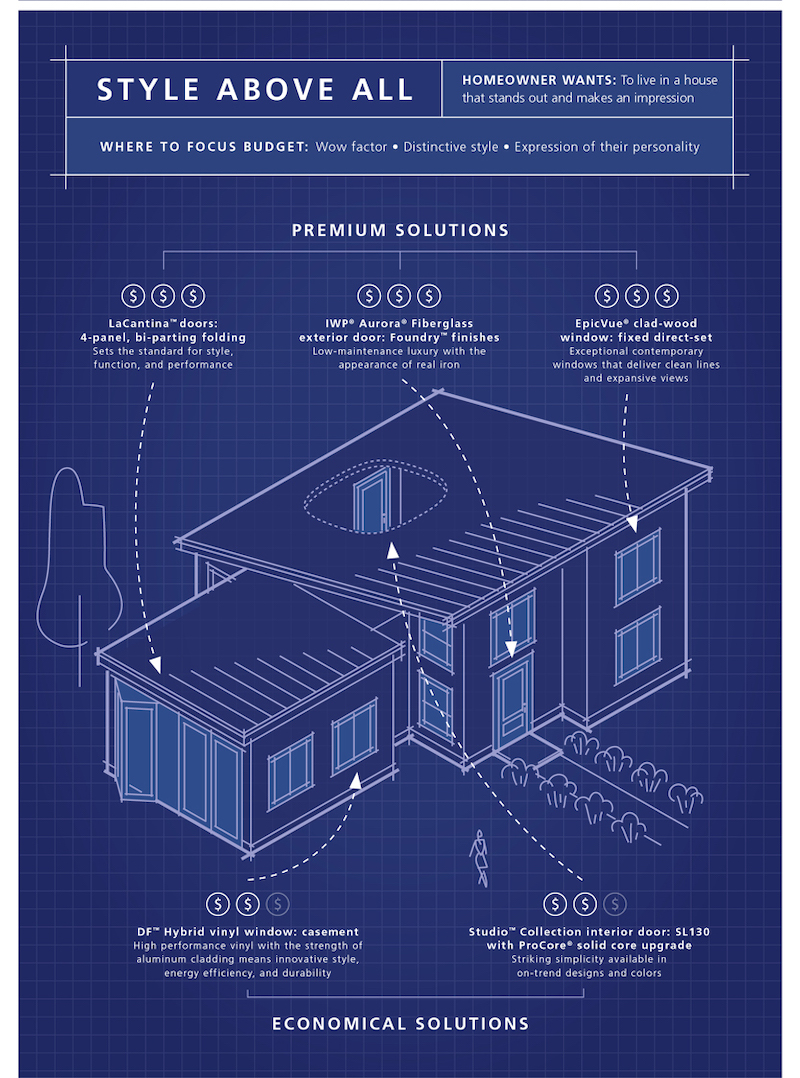
In addition to the rooms with the views, consider how rooms will be used. Garages often have street-facing windows, and bathrooms might, too. Even so, avoid using higher-end products in these spaces. Garages get exposed to a lot of humidity and weather, and bathrooms and other wet areas experience a lot of moisture—all of which only reduces the lifespan of premium wood windows. However, wood windows with JELD-WEN’s exclusive AuraLast® pine are built to last by fighting against rot, water damage and termites. Or, Garnett recommends “putting all-vinyl windows in those areas.”
For impressive style, folding glass doors—in effect, walls of glass—deliver an unbeatable wow factor. “We’re doing a lot of collapsible doors, whether accordion or telescopic,” Hallett says. “They transform a space, taking what would have been just one space and opening it up and letting it flow.”
Premium folding doors, like LaCantina, provide both a high-end look and high-quality performance. Use folding glass doors where and when the budget allows, Hallett advises. When it doesn’t, a liberal use of more economical folding doors, like JELD-WEN’s F-2500™, can also deliver both style and performance.
To create a house that stands out, think about the parts of the house that demand—and deserve—the most attention. A great room might have a large bay window or a turret corner, for instance. In these spots, use a more costly color frame for the windows, Hallett says. “You play with color to emphasize that feature.”
For more on value engineering your home designs to achieve winning results, check out JELD-WEN’s infographic, Mixing Products For Maximum Results.


